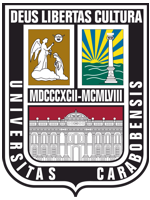Medios digitales y su impacto en la salud mental y la identidad
DOI:
https://doi.org/10.46502/issn.1856-7576/2024.18.04.20Palabras clave:
Influencia de los medios, alfabetización mediática, salud mental, identidad, análisis de redes sociales, currículo escolar.Resumen
La omnipresencia de la información digital ha transformado la forma en que los jóvenes interactúan con los medios y construyen su identidad. Esta realidad plantea desafíos, como la diseminación de noticias falsas y el impacto en la salud mental. El presente estudio explora la relación entre los estudiantes de educación media en Colombia y la era digital, con el objetivo de comprender cómo navegan en el vasto océano de información digital y cómo esto influye en su alfabetización mediática, salud mental e identidad en el entorno escolar. Se empleó una metodología mixta, combinando encuestas y entrevistas para recopilar datos sobre hábitos de consumo de medios, percepciones de identidad y experiencias relacionadas con el bienestar mental. Los resultados revelaron una brecha en la capacidad de los estudiantes para discernir la veracidad de la información y gestionar la presión de presentar una autoimagen ideal en línea. Además, se observó una prevalencia de sentimientos de estrés y ansiedad asociados con el uso de medios digitales. Se concluye que es crucial implementar una educación mediática sólida en los currículos escolares para equipar a los jóvenes con las habilidades necesarias para interactuar de manera crítica y saludable con los medios digitales en la era moderna.
Citas
Arbeláez-Campillo, D. F., Tatsiy, V. Y., Rojas-Bahamón, M. J., & Danilyan, O. G. (2020). Contributions of critical thinking as a form of participation and political deliberation. Amazonia Investiga, 9(27), 5–12. https://doi.org/10.34069/AI/2020.27.03.1
Best, P., Manktelow, R., & Taylor, B. (2014). Online communication, social media and adolescent wellbeing: A systematic narrative review. Children and Youth Services Review, 41, 27-36. https://doi.org/10.1016/j.childyouth.2014.03.001
Buckingham, D. (2007). Digital Media Literacies: Rethinking Media Education in the Age of the Internet. Research in Comparative and International Education, 2(1), 43-55. https://doi.org/10.2304/rcie.2007.2.1.43
Couldry, N., & Hepp, A. (2017). 'The Mediated Construction of Reality'. Polity Press. https://onx.la/d73ea
Fardouly, J., Diedrichs, P. C., Vartanian, L. R., & Halliwell, E. (2015). Social comparisons on social media: the impact of Facebook on young women's body image concerns and mood. Body image, 13, 38-45. https://doi.org/10.1016/j.bodyim.2014.12.002
Hobbs, R. (2010). 'Digital and Media Literacy: A Plan of Action'. The Aspen Institute, pp. 1-63. https://onx.la/41506
Jenkins, H. (2009). Confronting the challenges of participatory culture: Media education for the 21st century. Cambridge, MA: MIT Press.
Kowalski, R. M., Giumetti, G. W., Schroeder, A. N., & Lattanner, M. R. (2014). Bullying in the digital age: A critical review and meta-analysis of cyberbullying research among youth. Psychological bulletin, 140(4), 1073. https://doi.org/10.1037/a0035618
Lewandowsky, S., Ecker, U. K., & Cook, J. (2017). Beyond Misinformation: Understanding and Coping with the “Post-Truth” Era. Journal of Applied Research in Memory and Cognition, 6(4), 353-369. https://doi.org/10.1016/j.jarmac.2017.07.008
Lister, M., Dovey, J., Giddings, S., Grant, I., & Kelly, K. (2008). New media: A critical introduction. Routledge. https://doi.org/10.4324/9780203884829
Manago, A.M., Graham, M.B., Greenfield, P.M. & Salimkhan, G. (2008). 'Self-presentation and gender on MySpace'. Journal of Applied Developmental Psychology, 29(6), 446-458. https://doi.org/10.1016/j.appdev.2008.07.001
Misra, S., & Stokols, D. (2012). Psychological and Health Outcomes of Perceived Information Overload. Environment and Behavior, 44(6), 737-759. https://doi.org/10.1177/0013916511404408
OMS (2018). Mental health: Strengthening our response. World Health Organization. Available: https://www.who.int/news-room/fact-sheets/detail/mental-health-strengthening-our-response.
Przybylski, A. K., Murayama, K., DeHaan, C. R., & Gladwell, V. (2013). Motivational, emotional, and behavioral correlates of fear of missing out. Computers in Human Behavior, 29(4), 1841-1848. https://doi.org/10.1016/j.chb.2013.02.014
Rojas-Bahamón, M. J., Pulido Jiménez, A., & Serrato Rodríguez, Y. (2023). Prácticas de seguridad de la información en estudiantes de escuela secundaria en Colombia. Entre Ciencia E Ingeniería, 17(33), 16-23. https://doi.org/10.31908/19098367.2832
Rojas Bahamón, M. (2012). Diagnóstico acerca del uso y apropiación de las TIC como mediación didáctica. Amazonia Investiga, 1(1), 5-18. https://doi.org/10.34069/AI/2012.01.02.1
Turkle, S. (1995). Life on the screen: Identity in the age of the Internet. New York: Simon & Schuster. https://onx.la/62167
Twenge, J. M., Joiner, T. E., Rogers, M. L., & Martin, G. N. (2017). Increases in depressive symptoms, suicide-related outcomes, and suicide rates among U.S. adolescents after 2010 and links to increased new media screen time. Clinical Psychological Science, 6(1), 3–17. https://doi.org/10.1177/2167702617723376
Twenge, J.M., & Campbell, W.K. (2018) 'Media use is linked to lower psychological well-being: Evidence from three datasets'. Psychiatric Quarterly, 89(2), 311-331. https://doi.org/10.1007/s11126-019-09630-7
Vannucci, A., & McCauley Ohannessian, C. (2019). Social media use subgroups differentially predict psychosocial well-being during early adolescence. Journal of Youth and Adolescence, 48(8), 1469-1493. https://link.springer.com/article/10.1007/s10964-019-01060-9
Vosoughi, S., Roy, D., & Aral, S. (2018) 'The spread of true and false news online'. Science, 359(6380), 1146-1151. https://doi.org/10.1126/science.aap9559
Wardle, C., & Derakhshan, H. (2017). 'Information Disorder: Toward an interdisciplinary framework for research and policymaking'. Council of Europe Report, pp. 1-110. https://onx.la/4eef1
Zhao, S., Grasmuck, S., & Martin, J. (2008). Identity construction on Facebook: Digital empowerment in anchored relationships. Computers in human behavior, 24(5), 1816-1836. https://doi.org/10.1016/j.chb.2008.02.012
Publicado
Cómo citar
Número
Sección
Licencia
Derechos de autor 2025 Magda Julissa Rojas-Bahamon, Diego Felipe Arbeláez-Campillo

Esta obra está bajo una licencia internacional Creative Commons Atribución 4.0.















